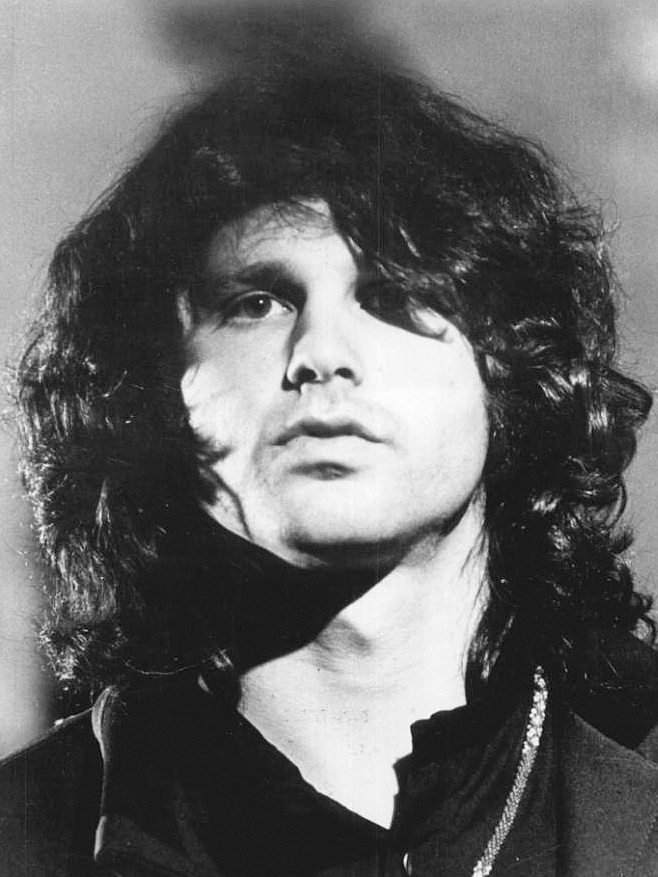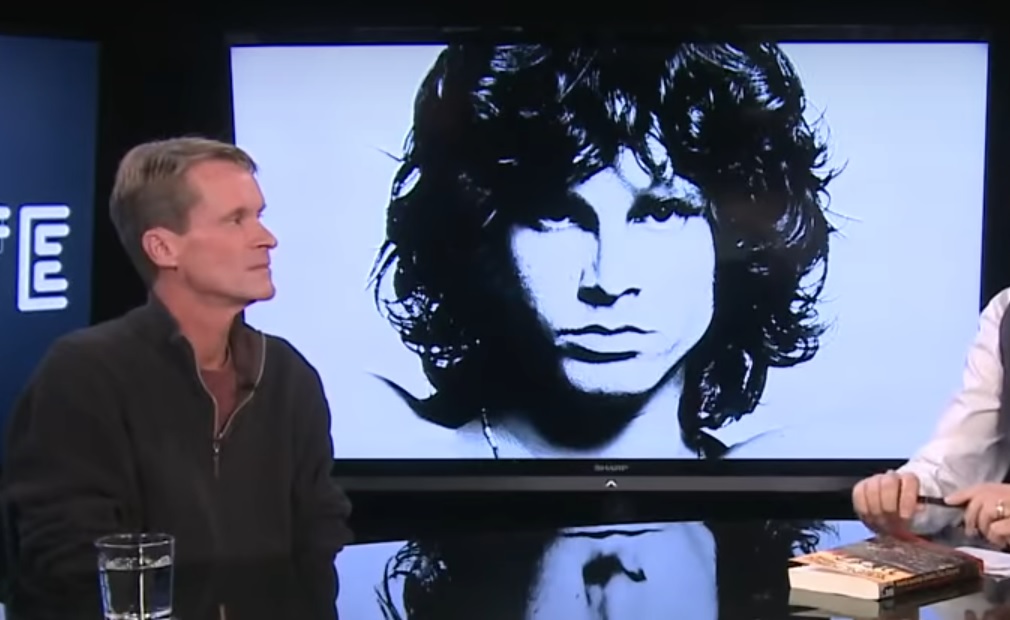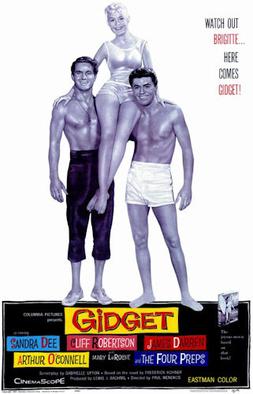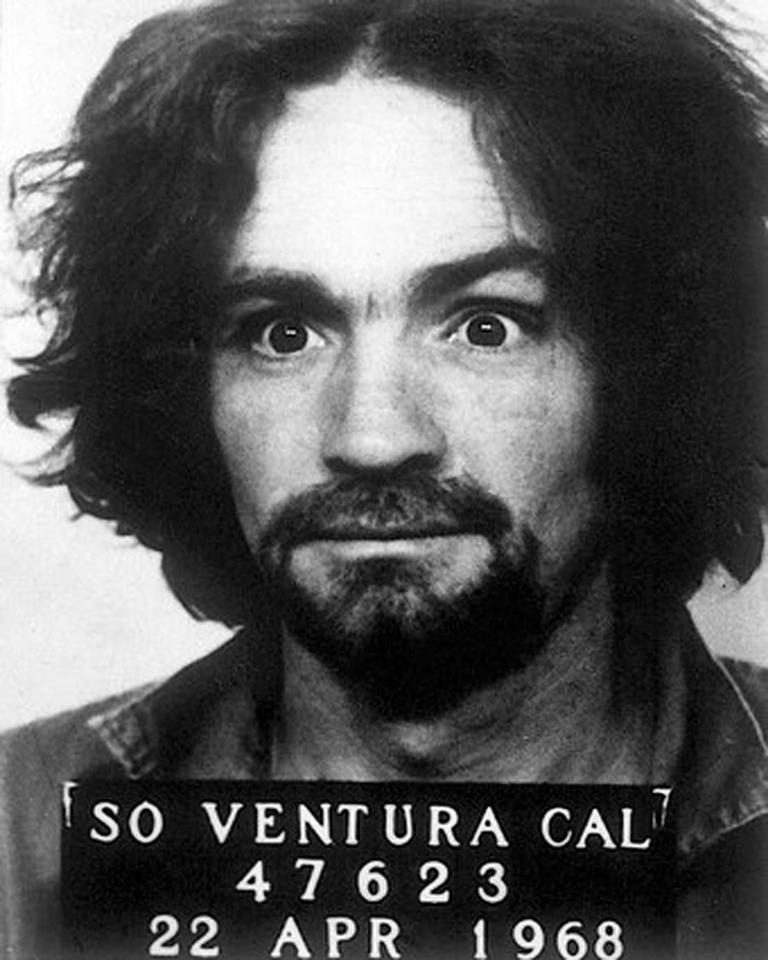Weird Scenes Inside the Canyon
Laurel Canyon, Covert Ops & The Dark Heart of the Hippie Dream
David McGowan (with a foreword by Nick Bryant)
Headpress, April 30, 2014, 316 pages (Paperback), also has Kindle version
This book addresses the question whether and to what extent powerful interests such as the “military industrial complex” influence or even fully create popular culture and the “news” convincing us to buy goods and services, support public policies or do things that are not in our interest and even quite harmful.
Weird Scenes Inside the Canyon argues that the hippie counterculture of the 1960’s largely grew out of the folk rock “revolution” music scene in Laurel Canyon in Southern California epitomized by the Byrds, Jim Morrison, and other counterculture icons of the era who lived in and around Laurel Canyon — not Haight Ashbury in San Francisco. Not only that but the Laurel Canyon music scene was a carefully staged psychological operation by “military intelligence” and the CIA to discredit the anti-Vietnam war movement by associating it with long haired, oddly dressed, drug addicted hippies.

The poster child for this theory is Jim Morrison of the Doors, surprisingly the son of Rear Admiral George Stephen Morrison who commanded the US fleet in the infamous and controversial Gulf of Tonkin incidents in August of 1964 which provided the pretext for a massive increase in the US involvement in Vietnam — flooding the small south-east Asian nation with US troops in 1965. Yes, Jim Morrison really was the son of Admiral Morrison. A number of other key figures in the folk rock revolution/Laurel Canyon music scene were sons of career military officers including John Philips of the Mamas and Papas, Frank Zappa, Gram Parsons of the Byrds, and Stephen Stills of Buffalo Springfield.

David McGowan (1960-2015, no relation) presents the birth of the 1965 folk rock revolution as follows:
All these folks gathered nearly simultaneously along the narrow, winding roads of Laurel Canyon. They came from across the country— although the Washington, DC area was noticeably over-represented— as well as from Canada and England, and, in at least one case, all the way from Nazi Germany. They came even though, at the time, there was no music industry in Los Angeles. They came even though, at the time, there was no live music scene to speak of. They came even though, in retrospect, there was no discernible reason for them to do so.
McGowan, David. Weird Scenes Inside The Canyon: Laurel Canyon, Covert Ops & The Dark Heart Of The Hippie Dream (p. 17). Headpress. Kindle Edition.
David McGowan returns to this theme several times in the book and in most of the many interviews he did on the book, many available on YouTube as of July 9, 2022. This thesis is demonstrably false.
There was a sizable music industry in Los Angeles in the 1958 to 1965 period including the Southern California icon Capitol Records founded in 1942. Capitol Records was the label for the Kingston Trio who launched the “folk music revival” in 1958 with their hit “Tom Dooley.” The author mentions Capitol at least three times in the book! Other LA area record labels included: Liberty Records (1955-1971), Dot Records (in LA 1956-present), Arwin Records (late 1950s-mid 1960s), Dunhill Records (1964-1967), and GNP Crescendo Records (1954-present).
There was a sizable live music scene as well including several nightclubs such as Doug Weston’s Troubadour, opened in 1957, that specialized in folk music. The author mentions the famous Troubadour club at least five times! Other live folk music venues at the time included Pandora’s Box (about 1958-1966) and Ed Pearl’s The Ash Grove (1958-1973).
There were many reasons for musicians, particularly folk musicians, to relocate to the Los Angeles area in the 1960s.
The folk music revival of the late 1950s, sparked by the Kingston Trio’s hit “Tom Dooley,” (reminder: Capitol Records), sparked folk music clubs and records all over the United States and indeed the world. A large fraction of the Laurel Canyon musicians were struggling or moderately successful in the folk music scenes in New York/Greenwich Village (John Philips and Cass Elliot of the Mamas and Papas), Toronto (Neil Young and Joni Mitchell), Cambridge (Harvard/Boston), Kansas City etc. There is a long history in the United States of people rebooting or trying to reboot a failed or stagnant career by heading west, especially to California.

Southern California could offer balmy weather, beaches, and scantily clad members of the opposite sex as well as proximity to the glamorous movie industry and a long history of tolerance for Bohemians and other oddballs compared to much of the country. California was not nearly as expensive in the 1950’s and early 1960’s as it is today.
Books like the 1957 bestseller Gidget and hit movies such as 1959’s Gidget, a sanitized movie version of the book starring Sandra Dee and James Darren, painted an idyllic vision of Southern California for teens and young adults. The Los Angeles music industry began churning out beach songs with the Beach Boys — another Capitol Records band — well before 1965. There were many reasons for struggling or stagnant folk musicians to migrate to LA.
How Typical was Jim Morrison?
Hundreds of musicians, both famous and not so famous, lived in and around Laurel Canyon in the late 1960’s into the 1970’s. An obvious explanation for the presence of ex military kids like Jim Morrison which Dave McGowan acknowledged in many of his interviews is rebellion against their presumably strict military upbringing. Military officers are often stereotyped as distant or even abusive fathers who try to run their family like a military unit, an often unsuccessful method. Dave McGowan argued that while this could explain an excess of military kids, all of the Laurel Canyon musicians were from military or military intelligence families or (in some interviews) all military or super-rich families; Gram Parsons of the Byrds was apparently both.
However, many of the musicians Dave McGowan mentions or even devotes entire chapters to did not have obvious military families. Although John Philips of the Mamas and the Papas father was a retired Marine Corps officer, Cass Elliot (Naomi Cohen)’s father ran a lunch wagon business for construction workers in the Baltimore area, Denny Doherty’s father was a dockworker, and Michelle Phillips (Gilliam)’s father was an LA County probation officer who had served in the military probably during or around World War II (see below for more discussion of World War II).
The book devotes an entire chapter “Endless Vibrations” to the scandalous, sometimes criminal antics of the Beach Boys. The Wilson brothers of the Beach Boys’ father Murry Gage Wilson owned an industrial equipment rental company in the Los Angeles area. Their cousin and fellow Beach Boy Mike Love’s father Edward Milton Love founded and owned Love Sheet Metal Company, another LA business.
Arthur Lee of Love, one of the few African American Laurel Canyon musicians, also the subject of an entire chapter, did not come from a military family. His biological father Chester Taylor was a cornet player. His step-father Clinton Lee was drafted in World War 2 but was a construction worker and stonemason in Los Angeles after the war, not a career military man.
Canadian Neil Young of Buffalo Springfield’s father Scott Alexander Young was a journalist. Fellow Canadian Joni Mitchell (Robert Joan Anderson)’s father William Andrew Anderson served in the Canadian military during World War II but became a grocer after the war. And so on. On close examination, many Laurel Canyon musicians, including many prominently featured in the book, did not come from career military families. While many appear to have come from solidly middle class or upper-middle class backgrounds, only a few are/were clearly super rich before making it big in popular music.
Most of the Laurel Canyon musicians were born in the early 1940s, right before, usually during, and occasionally right after World War II. Their parents were nearly all young adults during the war, the prime age to be drafted or volunteer for the massive war effort. It is estimated about sixteen million Americans served in the military during World War II (about two million in Europe), about eleven percent of the US population.
The US began building up its military and supplying arms to the British Empire years before Pearl Harbor. It took some time to somewhat demobilize the military after World War II with the Cold War perpetuating much of the wartime military and industry. World War II followed the Great Depression, most likely making a military career unusually appealing to this generation.
It is not surprising many Laurel Canyon musicians had parents who served in the World War II military. Many appear to have returned to civilian life. That some did not or had made a career of the military against the backdrop of the Great Depression and sky-high unemployment levels is also not that surprising.
The Classified Lookout Mountain Film Studio
Laurel Canyon was home to a secret classified film studio and lab on Lookout Mountain, a relatively secluded location up in the hills, from the 1940s until at least 1969. It is apparently now the home of actor Jared Leto. This appears to have been used to produce films of nuclear weapons tests but very little is known about the facility.
Weird Scenes suggests the facility may have somehow managed the Laurel Canyon hippie psyop, but presents no real evidence, even tangential connections between employees of the facility and hippie rockers who presumably at least occasionally passed each other in the Laurel Canyon shops, may have been neighbors, etc.
Mobsters, Manson, and Satanism
Weird Scenes features a Laurel Canyon “death list” of drug overdoses, suspicious accidents, purported suicides and clear murders in and around Laurel Canyon. Charles Manson and his followers had a number of well documented as well as alleged ties to some of the Laurel Canyon musicians, including Dennis Wilson of the Beach Boys. Manson and some others had ties to Anton Szandor LaVey (real name Howard Stanton Levy) and/or his Church of Satan. Heavy drug use and drug dealing permeate the accounts of the Laurel Canyon music scene.

The book connects Laurel Canyon to many scandals and crimes, mostly in the LA area and in some cases alleges ties to various organized crime figures. The book manages to pull in everything from the death of stage magician and escape artist Houdini who lived in Laurel Canyon for a while, the Black Dahlia murder in 1947, the Tate-LaBianca (Manson) murders, and the so-called Wonderland murders in July of 1981 well after the Laurel Canyon music scene had peaked. Most of this has little to do with military intelligence or the CIA on the surface.
The book is not alone in suggesting a link between the “intelligence community” and Charles Manson. Tom O’Neil’s Chaos: Charles Manson, the CIA, and the Secret History of the Sixties (Little Brown and Company, June 25, 2019) speculates Manson and his cult were a CIA MK-ULTRA mind control and COINTELPRO operation to discredit the hippies and undermine the anti-war and/or anti-establishment movements of the time — not unlike Dave McGowan’s theory.
Perhaps. The evidence is rather weak. What then to make of the history of crime and scandal including Manson associated with Laurel Canyon?
The Sunset Strip, home to the nightclubs associated with the Laurel Canyon folk rock revolution music scene has a long and shady history. The Sunset Strip is only a few miles from the entrance to Laurel Canyon, an easy commute by car even today (about eight to eighteen minutes by car on Mondays at 8:30 AM according to Google). Google Maps reports it is an hour and a half walk from the so-called Houdini Estate in Laurel Canyon to the infamous Viper Room nightclub on Sunset Strip today.
The Pandora’s Box coffee house/nightclub (about 1958 to 1966) that specialized in folk music was located at 8118 Sunset Boulevard, about 1.4 miles from the Houdini Estate, only about four to eight minutes by car on Mondays at 8:30 AM today.
The Sunset Strip started out as an unincorporated region connecting Beverly Hills to the west and Hollywood to the east with lax law enforcement. In the 1920s it became home to nightclubs, speakeasies, strip clubs and other dubious operations often associated with the gangsters of the Prohibition era, a pattern generally agreed to have continued up to at least the 1950s.
The nightclubs catered to the Hollywood elite as well as the general public and often were associated with prostitution, gambling, drug dealing, and other illegal activities. Notorious mobsters such as Bugsy Siegel and his successor Micky Cohen frequented many of the nightclubs and were said to control some or all of them. Other nightclubs nearby, not on Sunset Boulevard, had similar reputations and histories.
One of the prime suspects in the gruesome Black Dahlia murder in 1947 was Mark Hansen, owner or co-owner of the huge Florentine Gardens nightclub (5955 Hollywood Boulevard). Elizabeth Short, the so-called Black Dahlia, was one of many young women who frequented the huge nightclub and stayed intermittently in Hansen’s bungalow behind the Florentine Gardens. Someone claiming to be the killer mailed a package with Short’s birth certificate, social security card, other personal items, and an address book with Mark Hansen’s name on the cover to the Los Angeles Examiner newspaper making Hansen one of the prime suspects. Hansen was widely believed to be mob connected at the time.
Historically, entertainment is a great business for laundering money because theater tickets, nightclub tickets, records and CD’s etc. were usually purchased with cash. Drug dealing, prostitution, illegal gambling and many other illegal activities generate large amounts of cash.
There are both widespread rumors and several documented scandals such as the extortion conviction of Morris Levy suggesting deep organized crime involvement in the music industry and payoffs to DJs and radio stations to play music on the air.
Charles Manson, for example, looks suspiciously like an underworld character who was selling drugs and women to the Laurel Canyon elite. Perhaps he truly went nuts or perhaps he was stiffed in a drug deal or other illegal transaction — or set up as a fall guy by some other nefarious persons. None of this requires the CIA or military intelligence or a psyop to discredit the anti-war movement.
The Death of Dave McGowan
Shortly after Weird Scenes Inside the Canyon was published, Dave McGowan died, reportedly from pancreatic cancer. The common highly aggressive form of pancreatic cancer usually kills in about six months.
Dave McGowan had been a little known “conspiracy theory,” usually a loaded pejorative term, writer with various articles, a web site, and several books prior to publication of Weird Scenes which did much better, garnering numerous reviews and sales on Amazon. He was interviewed on podcasts, radio and video a lot after Weird Scenes was published. This has led to suggestions that the book was too successful and the conspiracy killed him, presumably using a carcinogenic agent.
Certainly his death does seem a bit too coincidental. That said, about nine percent of Americans die in their fifties usually from common diseases such as cancer and heart attacks associated with old age. Dave McGowan was about fifty-five (55) when he died.
Conclusion
It is impossible at present to rule out the thesis of Weird Scenes Inside the Canyon but the case presented is weak. There was a vibrant music industry in LA in the late 1950s and early 1960s. There was a vibrant live music scene in LA dating back at least to the Sunset Strip of the 1920s. There were many reasons for folk musicians in particular to move to LA and Laurel Canyon near the live music venues in the mid 1960s.
Many of the Laurel Canyon musicians had negligible family or personal ties to the military, military intelligence, or the CIA. Several, most notably Jim Morrison, did have such ties which might make one wonder.
The scandals, crimes, and various shady goings on associated with Laurel Canyon and with the Laurel Canyon music scene probably reflect organized crime involvement in nightclubs and the music business dating back to the 1920s rather than some larger intelligence community plot.
(C) 2022 by John F. McGowan, Ph.D.
About Me
John F. McGowan, Ph.D. solves problems using mathematics and mathematical software, including developing gesture recognition for touch devices, video compression and speech recognition technologies. He has extensive experience developing software in C, C++, MATLAB, Python, Visual Basic and many other programming languages. He has been a Visiting Scholar at HP Labs developing computer vision algorithms and software for mobile devices. He has worked as a contractor at NASA Ames Research Center involved in the research and development of image and video processing algorithms and technology. He has published articles on the origin and evolution of life, the exploration of Mars (anticipating the discovery of methane on Mars), and cheap access to space. He has a Ph.D. in physics from the University of Illinois at Urbana-Champaign and a B.S. in physics from the California Institute of Technology (Caltech).

